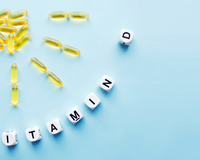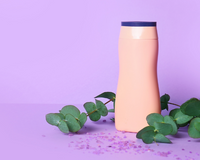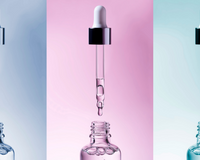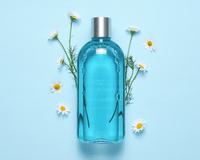The redness that begins in the middle of the face and spreads to the cheeks, chin, and nose is the most noticeable symptom of rosacea, also known as rose sickness. You can find the dermatological best skin care products for rosacea you need for this skin ailment, also known as adult acne, which can later manifest itself on the ears, back, and chest. If not addressed, this skin disease, which is more common in women, can become serious, so you should keep it under control using a variety of expert solutions. Rosacea is a chronic, persistent skin illness characterized by recurrent flushing, hot flushes, acne-like blisters, inflammatory blisters, and superficial vasodilation known as telangiectasia. It affects the cheeks, nose, chin, and forehead.
Best Skin Care Products For Rosacea
You can use the best skin care products for rosacea. When using specially made skin rash solutions from well-known companies like Avene, Bioderma, and La Roche Posay, there are a few things to keep in mind. You should avoid hot drinks, spicy foods, caffeine, and alcoholic beverages when using these items because they will make your skin redder. Your skin should be protecting from the sun and harsh cold. Instead of irritating cosmetics, you should choose for items that are specifically creating for your skin's structure.
Rosacea: What Are the Signs and Symptoms?
According to the symptoms of the sickness, there are many sorts of diseases. "Erythematotelangiectatic rosacea" occurs when redness and telangiectasias (superficial vasodilation) coexist. "Edematous rosacea" occurs when redness and edema coexist. "Rosacea fulminas" refers to acne-like skin problems that are accompanied by cysts (rosacea fulminas is the most severe form of Rose disease and can sometimes be confused with cystic acne). In rosacea, a condition known as "rhinophyma" can occur as a result of an expansion of the sebaceous glands on the nose.
Acne-like blisters and pustules (inflamed blisters) with a reddish surface are the most common lesions in the disease. In the most severe cases, cysts, hard nodules termed "granulomas," scars, and rhinophyma may develop. Morbihan's illness (permanent lymphedema) is a rare complication.
Rosacea is a skin condition that affects mostly women in their 30s, especially those with pale complexion. Women account for about 10% of the total cases. It is more severe in men than in women, despite the fact that it is rarer in men. Rosacea lesions generally worsen when you're stressing. The exact etiology of rose sickness has yet to be determining. Various hypotheses have been proposing in this regard. Increased sebum (oil secretion) best skin care products for rosacea, obstruction of the follicle (hair sac) mouths, or bacteria lodged in the hair follicle are not present in this illness, unlike acne vulgaris (acne). The major source of rosacea is assumed to be the skin's tiny veins. Blood vessels have been dilated. Fluid leaks into the dermis layer of the skin as a result of enlarged blood vessels and redness-warmth, resulting in an inflammatory reaction.
Therapy For Rosacea
Rosacea, like many chronic disorders, may necessitate long-term treatment. The basics of rosacea treatment are establishing by the cause and observation. As a result, there are numerous therapeutic options. Rosacea can be successfully treating in the majority of people. It's just as crucial to avoid triggering elements like the sun, heat, and alcohol. As it is to avoid the medicines use in treatment. As a result, the patient makes a significant contribution to the treatment.
Metronidazole, clindamycin, permethrin cream, tretinoin cream, and azelleic acid cream are externally applied medications for patients who only have papules (swelling) and pustules (inflamed blisters).
Oral antibiotics such as tetracycline, ampicillin, metronidazole, chloramphenicol, and erythromycin can be administering if skin lesions are more common and severe. These medications, however, can have negative side effects. Oral therapies are originally use in conjunction with medications administering topically. When the rosacea condition improves over time, oral therapies are withdrawn. And the patient's well-being is attempting to be maintaining only by the use of external medications.
Patients with severe and resistant rosacea may require treatment with 13-cis-retinoic acid. This therapy procedure, however, has a number of negative side effects. Dryness of the skin, sensitivity, dryness of the mucous membranes, dryness of the eyes, itching, dermatitis, muscle discomfort, deterioration in liver tests, and an increase in blood cholesterol and triglyceride levels are the most prevalent side effects. It should never be given to pregnant women because it may result in a difficult birth. Antihypertensive medications can also be use to alleviate the redness and warmth associating with rosacea.
Jumiso - All Day Vitamin Brightening & Balancing Facial Serum
Here is a product we can recommend as the best skin care products for rosacea. This illuminating, balancing serum contains 86.14 percent vitamin tree extract. Which is rich in vitamin A, B, C, D, E, and K complexes, for a radiant and balanced skin tone. Highlights: Providing antioxidant protection for the skin, balancing and brightening skin tone, soothing the skin, moisturizing without leaving a greasy residue, and supporting skin elasticity. This serum, which is essentially a vitamin store because it uses 86.14 percent vitamin tree extract instead of water, is the most crucial phase of the daily care regimen for people who want to even out skin tone and give it a bright appearance.
Rosacea is characterizing by redness and flare-ups that occur as a result of the best skin care products for rosacea. Ingredients like alcohol, menthol, and mint should be avoiding if you have this problem. Soothe redness and improve the skin barrier with anti-inflammatory Korean skin care and cosmetics that we've hand-picked for you. Including snail mucin, honey/propolis, and centella asiatica.
Methods like laser therapy and face massage for telangiectasias (superficial vasodilation) can be use as alternative treatments for rosacea. Despite the fact that rosacea is a prevalent skin illness. It is debatable which medication to use or combine for which clinical kind. Having conflicting information on the redundancy and effectiveness of options might be confusing. As a result, each patient should receive an individualized treatment plan. With the goal of improving the patient's quality of life.









